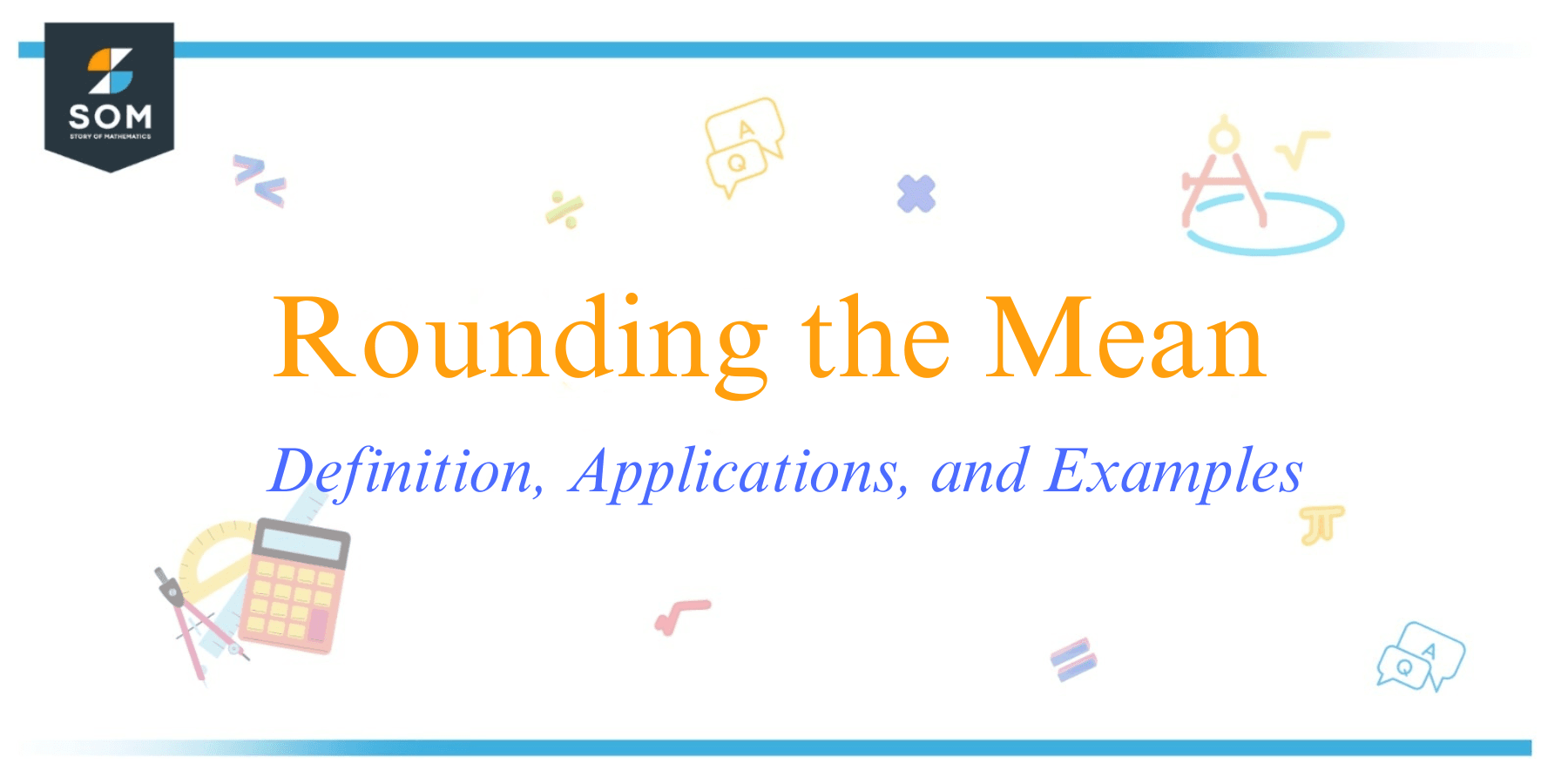JUMP TO TOPIC

In this article, we will delve into the reasons for rounding the mean, the different rounding methods available, and the potential implications of rounding on data analysis and decision-making processes.
Definition
Rounding the mean refers to the process of adjusting the calculated average of a set of numbers to a specified degree of precision. The mean, or average, is obtained by summing all the values in a dataset and dividing by the number of data points.
However, the mean often results in a decimal value that may not be practical or necessary, depending on the context. Rounding the mean involves reducing the number of decimal places or digits after the decimal point to a more suitable level, typically to simplify the value or align it with the desired level of precision.
This adjustment facilitates easier interpretation, communication, and comparison of the mean within a given context or application. Rounding the mean is a common practice in various fields, including statistics, finance, research, and everyday data analysis.
Exercise
Example 1
Consider the following data set of exam scores: 78, 83, 89, 92, 95. Round the mean to the nearest whole number.
Solution
To find the mean, sum all the scores and divide by the number of scores:
Mean = (78 + 83 + 89 + 92 + 95) / 5
Mean = 437 / 5
Mean = 87.4
Rounding the mean to the nearest whole number, we get: Rounded Mean = 87
Example 2
Suppose we have the following dataset of rainfall measurements (in millimeters) for five cities: 12.5, 13.2, 11.8, 10.6, 14.1. Round the mean to one decimal place.
Solution
To find the mean, sum all the measurements and divide by the number of measurements:
Mean = (12.5 + 13.2 + 11.8 + 10.6 + 14.1) / 5
Mean = 62.2 / 5
Mean = 12.44
Rounding the mean to one decimal place, we get: Rounded Mean = 12.4
Example 3
Consider a dataset of temperatures (in degrees Celsius) recorded throughout a week: 22.3, 21.6, 24.1, 20.9, 23.5, 24.9. Round the mean to the nearest whole number.
Solution
To find the mean, sum all the temperatures and divide by the number of temperatures:
Mean = (22.3 + 21.6 + 24.1 + 20.9 + 23.5 + 24.9) / 6
Mean = 137.3 / 6
Mean = 22.88
Rounding the mean to the nearest whole number, we get: Rounded Mean = 23
Example 4
Suppose we have a dataset representing the ages of a group of individuals: 32, 28, 35, 40, 37, 30. Round the mean to the nearest multiple of 5.
Solution
To find the mean, sum all the ages and divide by the number of ages:
Mean = (32 + 28 + 35 + 40 + 37 + 30) / 6
Mean = 202 / 6
Mean = 33.67
Rounding the mean to the nearest multiple of 5, we get: Rounded Mean = 35
Example 5
Consider a dataset of product prices (in dollars): $12.99, $9.99, $14.99, $8.49, $11.99. Round the mean to two decimal places.
Solution
To find the mean, sum all the prices and divide by the number of prices:
Mean = ($12.99 + $9.99 + $14.99 + $8.49 + $11.99) / 5
Mean = $58.45 / 5
Mean = $11.69
Rounding the mean to two decimal places, we get: Rounded Mean = $11.69
Applications
Rounding the mean finds applications in various fields where data analysis and statistical calculations are performed. Here are some examples of its applications in different domains:
Finance and Economics
Rounding the mean is commonly employed in financial calculations, such as computing average returns on investments or determining mean values of financial indicators. It helps simplify monetary values and aligns them with standard currency denominations.
Rounding the mean in financial contexts aids in budgeting, forecasting, and making informed decisions based on rounded average values.
Quality Control and Manufacturing
In industries that rely on quality control and manufacturing processes, rounding the mean can be useful for assessing product quality. By rounding the mean of measured parameters or quality metrics, such as dimensions or weights, it becomes easier to evaluate whether the product meets specific standards or falls within acceptable tolerances.
Education and Grading
Rounding the mean is often employed in educational settings to calculate and report grades. It allows for simplifying complex grade calculations, making them more understandable for students and parents. Rounding the mean in grading ensures consistency and fairness in evaluating student performance across different assessments or assignments.
Opinion Surveys and Polling
Rounding the mean is applied in analyzing survey data and polling results to present summary statistics. When reporting average ratings or responses, rounding the mean can help convey the overall sentiment or preference in a more concise and easily interpretable manner. It simplifies the representation of survey data while still providing meaningful insights.
Public Opinion and Polling Analysis
In political or social research, rounding the mean can be useful for analyzing public opinion polls. It facilitates the reporting of average responses or aggregated sentiment, allowing for clear communication of trends or patterns in a way that is understandable to policymakers, analysts, and the general public.
Market Research and Consumer Studies
Rounding the mean is often employed in market research to analyze and present consumer feedback or rating data. By rounding the mean of customer satisfaction scores or product ratings, market researchers can summarize and communicate the overall perception of a product or service in a more digestible format.
Statistical Reporting and Data Visualization
Rounding the mean is essential in statistical reporting and data visualization. When presenting summary statistics or creating charts and graphs, rounding the mean allows for cleaner and less cluttered visual representations. It ensures that the reported or visualized mean values are more easily understood and provide a clearer overall picture of the data.
